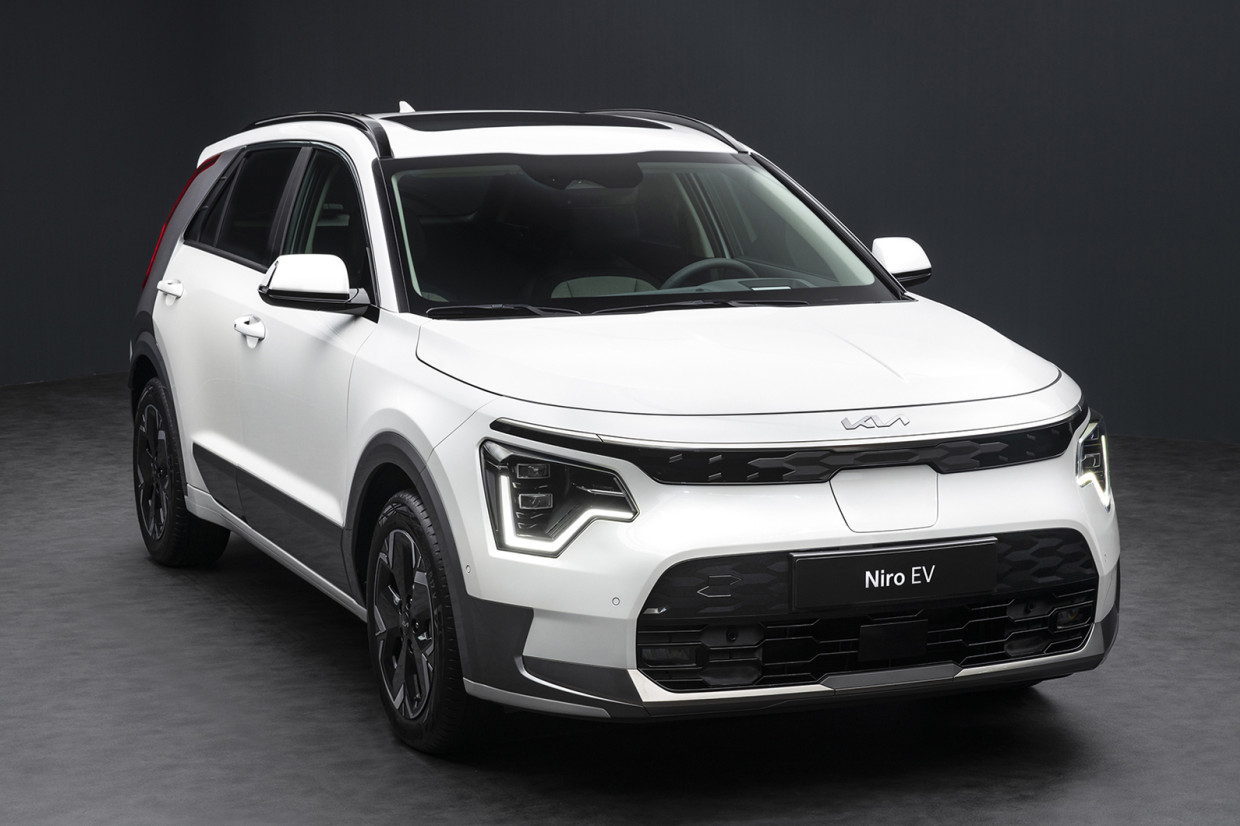
Bad news for Robert de Niro: the Kia e-Niro is no more. But while the Hollywood actor will be left to rue the lost endorsement earnings from his near-namesake, there’s no need for fans of the crossover to panic: Kia has launched a new second-generation version rebranded as the Niro EV.
The new Niro EV has received more than just a new name, though: Kia claims it has extensively reworked the hugely popular machine to ensure it keeps pace in the increasing competitive electric SUV market. In fact, Kia says the Niro has been “redesigned from the ground-up”.
Kia has now started taking pre-orders for UK models, with first deliveries expecting in the autumn. In the UK, pricing will start from £34,995 – matching the first-generation model it replaces. You'll find full details of UK pricing and specifications below.
What's in a name?
Right, let’s just clear up the name: the switch from e-Niro to Niro EV is simply to fit the branding of the multi-powertrain Niro line-up (alongside the Niro HEV and Niro PHEV), and to bring the machine in line with the rest of Kia’s electric range, such as the Soul EV and the EV6.
Kia e-Niro owner's story: what I learnt from a year driving an EV
The only real loser is Mr Di Niro. But we suspect he’s probably earned enough money as an actor that he can cope. If not, he could always try and sort a marketing deal with Caffe Nero, surely?
But back to the Niro EV. Because there’s a lot more to this second-generation version than just a name change.
The Niro EV is built on a whole new platform
Kia offers two distinct types of electric car: those built on platforms capable of housing multiple powertrains types, such as the Niro, and those built on dedicated electric platforms, such as the highly regarded EV6. While that means cars such as the Niro lack the absolute design freedoms offered by a bespoke electric platform, it does mean that are easier to adjust to for anyone new to EVs, generally cheaper and still very capable.
The new Niro is very much an evolution of its predecessor, but it is built on a brand-new platform. The previous model used the Hyundai Motor Group’s J Eco-Car architecture, while the new machine is the first Kia to use the group’s new K3 platform. The two are fairly similar, with the biggest difference that the K3 architecture was designed for electrified and electric powertrains from the start.
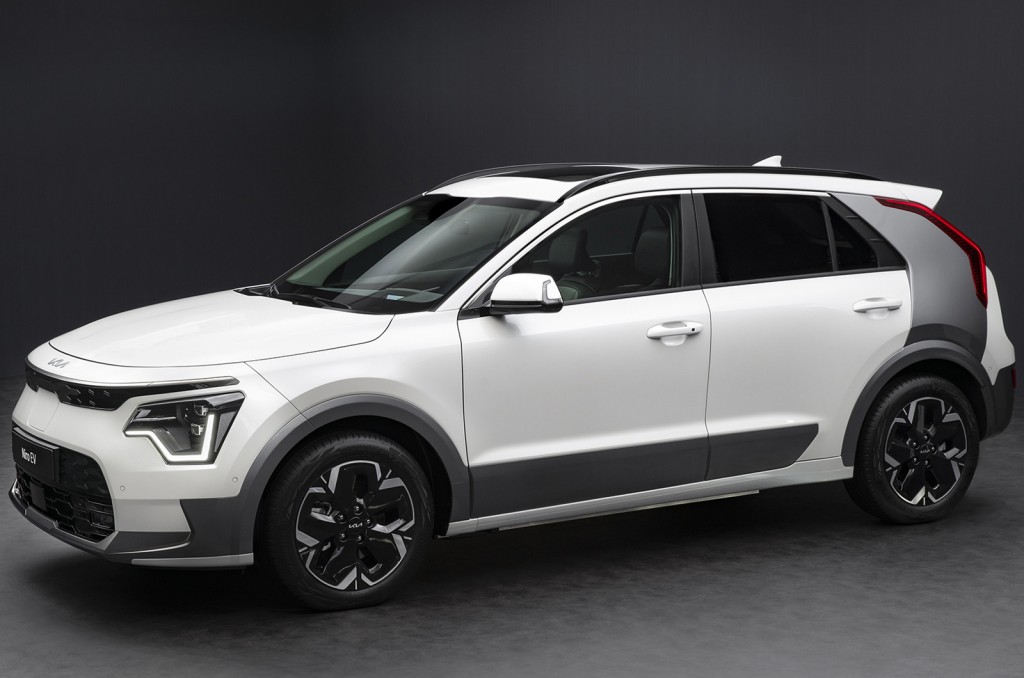
The platform also means the Niro has grown slightly: it’s now 4420mm long, 1825mm wide and 1570mm high, with a wheelbase of 2720mm. That makes it 65mm longer than the previous model, with the wheelbase increased by 20mm. While those are small margins, Kia claims that results in a substantial amount of extra interior space.
Move Electric Awards 2022: full winners list and video
The Niro EV keeps the same powertrain as its predecessor, which means it uses a 150kW (201bhp) motor that drives the front wheels, and also offers 188lb ft of torque. Power is drawn from a 64.8kWh lithium-ion polymer battery, with an official range of 287 miles and an average economy of 3.96mpkWh. Top speed is 104mph, with a 0-62mph time of 7.8 seconds.
The smaller 39kWh battery option that was offered on the first-gen version of the Niro will no longer be offered.
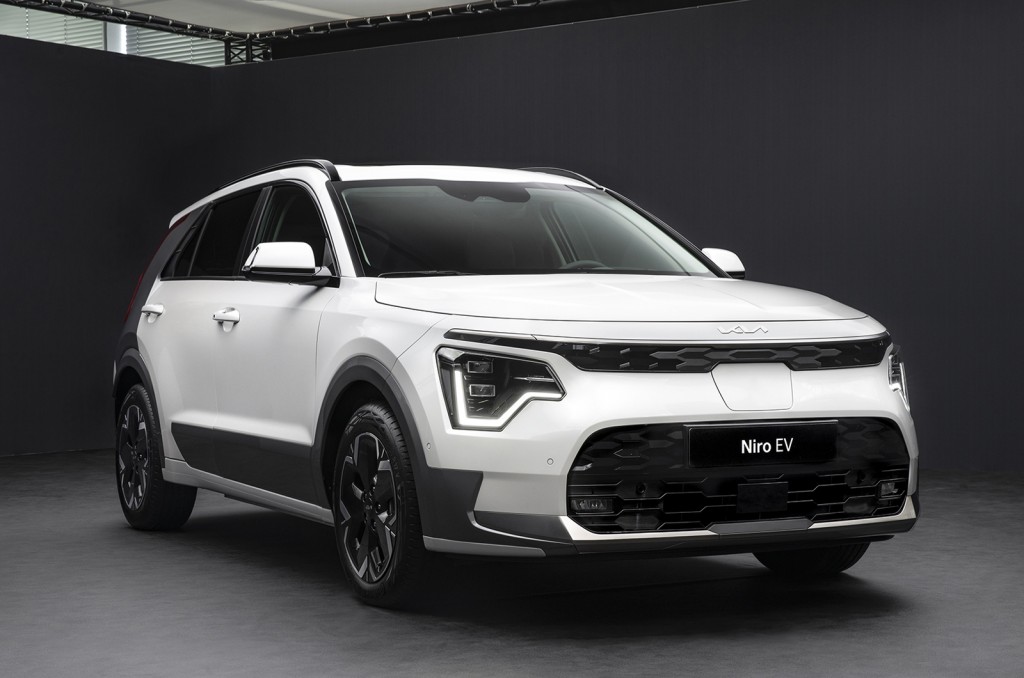
While the powertrain is the same, the Niro EV does get some new tricks: buyers can option a vehicle-to-load output function, which means the car can be used to power devices at speeds up to 3kWh. That function is already offered on the Kia EV6.
Kia also says the new K3 platform allows for revised suspension and steering, which has been tuned for extra responsiveness and stability. There’s a new tilt-type strut bearing that reduced friction, and enabled both a smoother damper motion and reduced friction in the steering column.
There’s also extra insulation and padding in the vehicle structure, which Kia claims has reduced road noise further.
Niro EV gains spicy new styling
Kia’s designers have given both the exterior and interior of the Niro EV a major makeover, with a design inspired by the HabaNiro concept car – perhaps the best pun-based name for a show car in recent memory – the firm revealed back in 2019.
The firm claims the design was guided by its design pillar of ‘joy for reason’, which apparently fuses emotional design and rational vehicles. That includes the latest version of Kia’s Tiger Face front end, which includes a lower grille and bumper design that is unique to the Niro EV.
The electric model also gains unique 17in alloy wheels, along with optional grey side cladding and a grey rear C-pillar. That rear pillar hides another near design trick: it has an air tunnel that runs through it, with an exit on the inside of the rear light. It’s a bit like some of the weird aerodynamic tunnels you find on modern F1 cars, and helps the Niro EV achieve a drag coefficient of 0.29Cd.
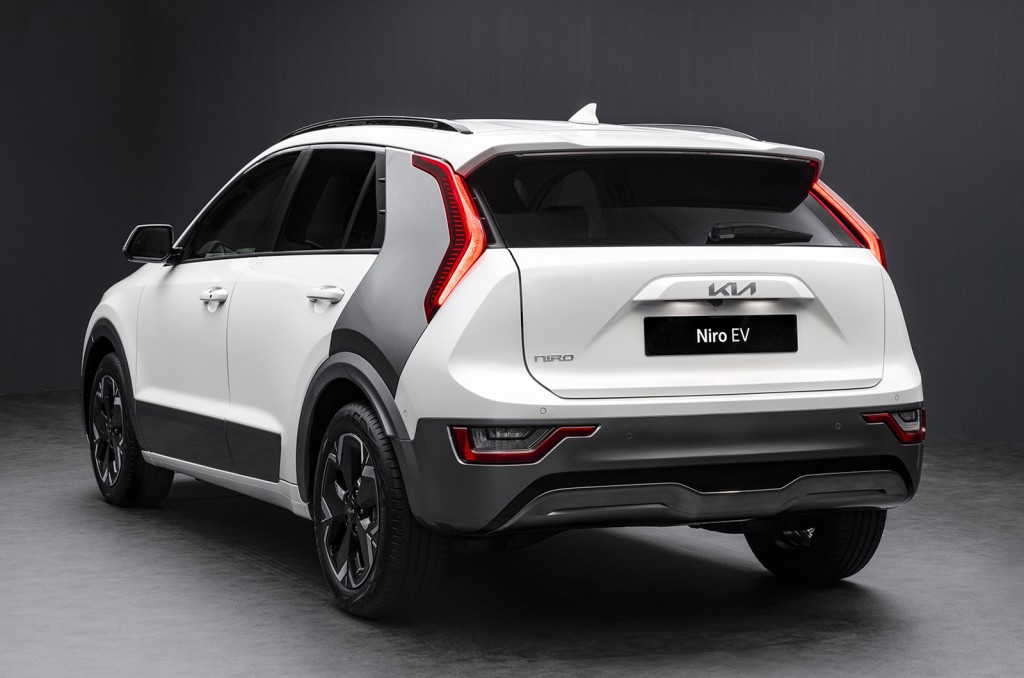
Inside, the Niro gains a new look dash which is similar to that used on the EV6 and combustion-engined Sportage, and includes two 10.25in digital screens, a multi-mode touch display (in which the buttons do different things depending on which mode you’re in) and a 10in head-up display.
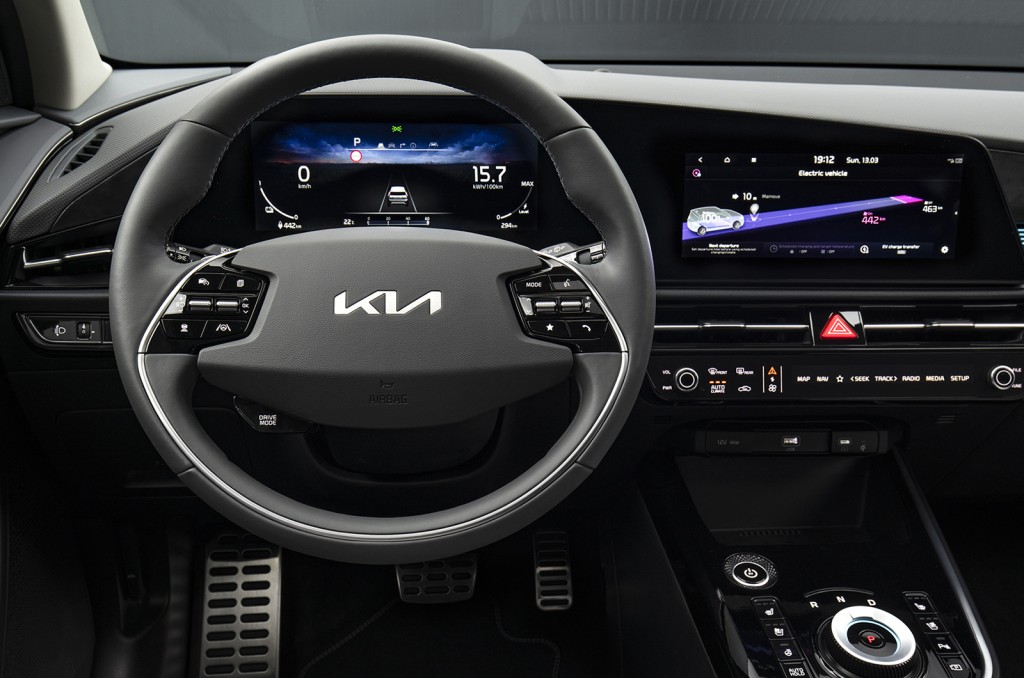
As is usual, there are lots of USB-C socked in front and rear, the passenger gets a ‘relaxion’ seat that can lift and recline when the vehicle is stationary, and Kia has worked on the voice control system.
The car is also designed to work with the Kia Connect app, where owners can check charging status and plot routes based on charging availability. Oh, and it also offers remove smart parking.
Also of note on the design side: the charging socket has now moved to the centre of the car’s front grille, which the firm says has been done to offer more flexibility at charging points. The machine has a 475-litre boot – which is bigger than that offered on both the new Niro HEV and PHEV – and for the first time gains a small 20-litre storage compartment under the bonnet. We’ll leave it up to you whether you want to call it a frunk, a froot or some other daft made-up word.
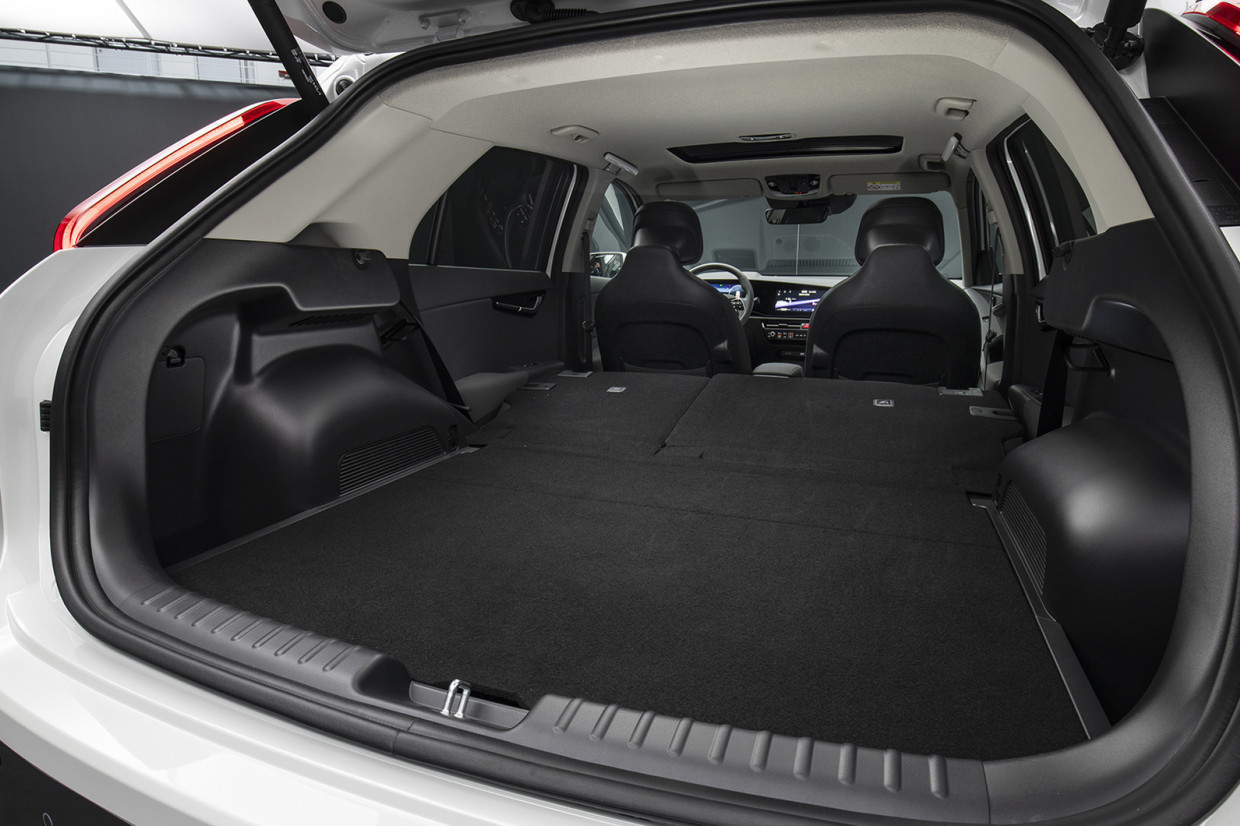
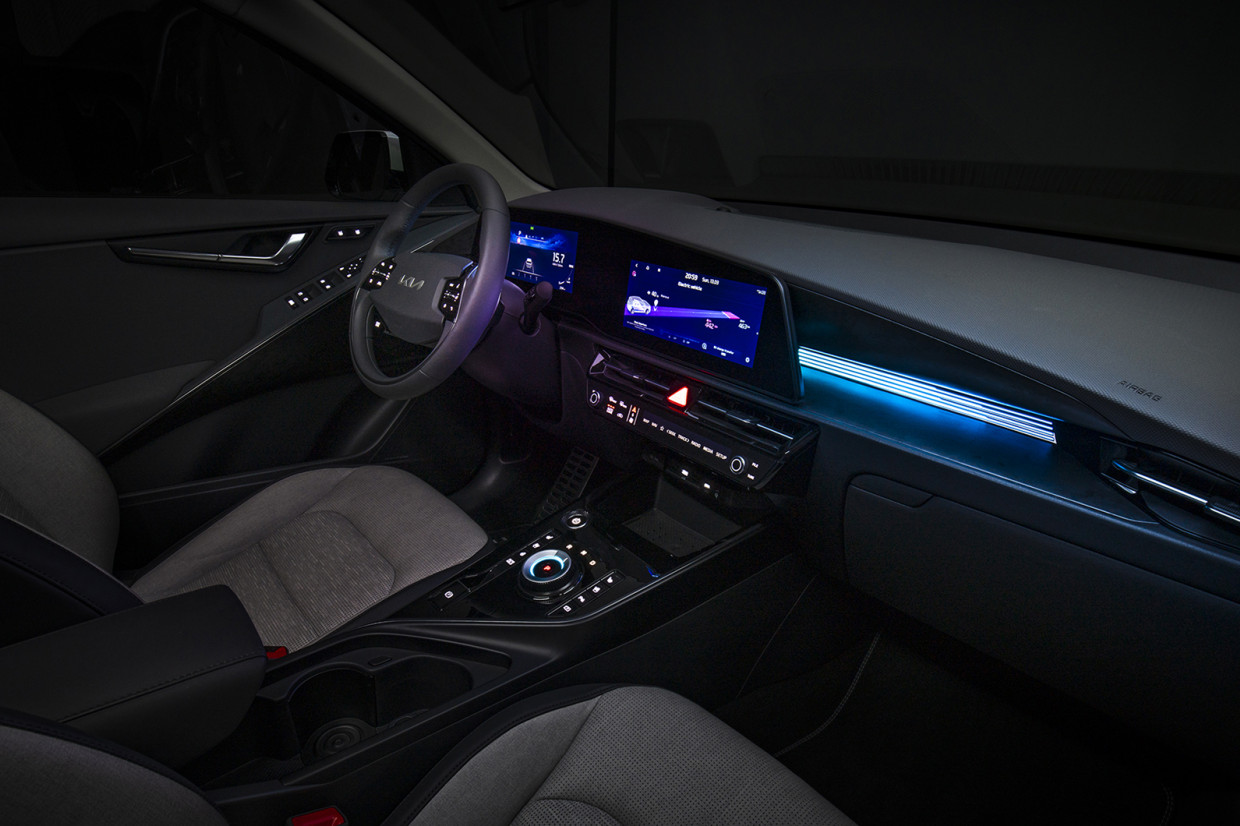
So what will this cost?
The Niro EV will be offered in three trim levels titled 2, 3 and 4 (no, we’re not sure what happened to 1, either).
The entry-level 2 models, which start from £34,995, include an 8.0in touchscreen, 10.24in instrument clusters, 17in alloy wheels, an 11kW on-board charger and a battery hearing system, as well as a raft of driver assistance systems.
The mid-grade 3 trim costs from £37,745 and adds 18in alloys, a 10.25in touchscreen, front parking sensors, heated seats and steering wheel and highway drive assist. Notably, 3 models also get the vehicle-to-load charging function, with the option of a heat pump.
The top-spec 4 trim is priced from £40,495 and features a head-up display, twin 10.25in touchscreen and instrument cluster, heated rear seats, a front passenger relaxation seat, an electric boot, PU vegan ‘leather’ seat coverings, a Harman Kardon audio system and remote smart parking. The contrasting C-pillar will be offered as an option, along with upgrades highway assist and collision avoidance systems.
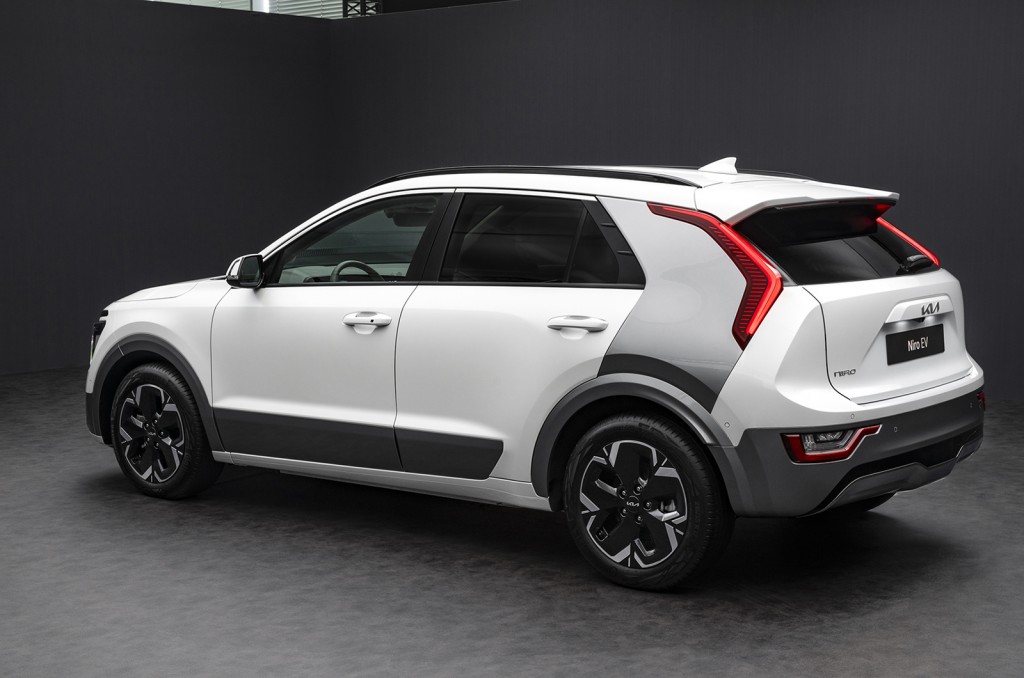
READ MORE
Subscribe to the Move Electric newsletter
Move Electric Awards 2022: full winners list and video
e-CARS
New Volkswagen ID Buzz: everything you need to know
How efficient are electric cars?
e-BIKES
Ducati expands e-bike range with first racing machine
e-MOTORBIKES
New Yamaha Neo is Europe-bound '50cc equivalent' electric moped
Electric Motion Epure Race e-motorbike review
e-SCOOTERS
Eskuta KS-450 e-scooter review
Taito unveils innovative new three-wheeled electric scooter
e-WORLD
Electric surfboard firm Awake aims to make waves with first e-foil
Volta Zero electric truck can 'dramatically improve' inner-city road safety

